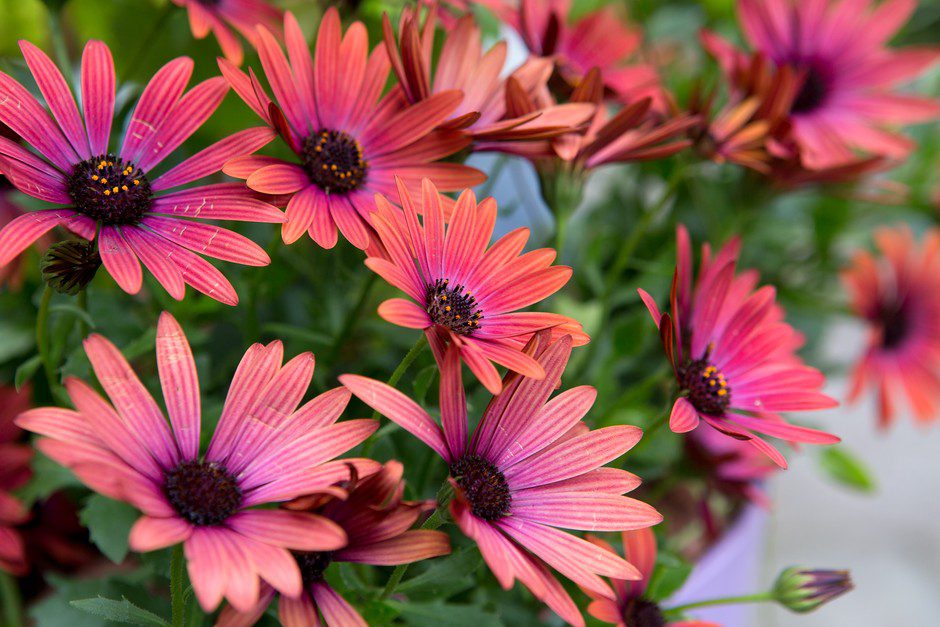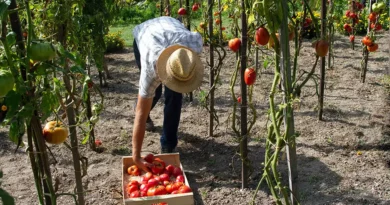What is Daisy Flower? Benefits, Uses and Importance
Daisy flowers belong to the Asteraceae family, which is one of the largest and most diverse plant families in the world. Within this family, daisies fall under the Anthemideae tribe. Their scientific classification is as follows:
- Order: Asterales
- Family: Asteraceae
- Tribe: Anthemideae
- Genus: Bellis
Common Species and Varieties
Daisies come in a multitude of species and varieties, each possessing its unique charm and characteristics. Some of the most common and beloved daisy species include:
- Bellis Perennis (Common Daisy): This is the quintessential daisy with its white petals and yellow center. It’s a symbol of innocence and purity.
- Leucanthemum x superbum (Shasta Daisy): Known for its large, white, and pristine petals, the Shasta daisy adds a touch of elegance to gardens.
- Echinacea purpurea (Purple Coneflower): While not a classic daisy, the purple coneflower belongs to the same Asteraceae family and is prized for its vibrant purple petals.
- Chrysanthemum maximum (Shasta Daisy): Often confused with the Shasta daisy, the ox-eye daisy features simple white petals and a golden-yellow center.
Botanical Characteristics of Daisy Flowers
Daisies boast several intriguing botanical features that set them apart from other flowers. These characteristics include:
- Inflorescence: Daisies typically have a single flower head composed of two types of florets: ray florets (the white petals surrounding the center) and disk florets (the tiny, yellow or brownish center).
- Foliage: Daisy leaves are typically simple, alternate, and toothed, growing in a basal rosette pattern.
- Habitat: Daisies are highly adaptable and can thrive in a variety of environments, from meadows and gardens to roadside verges and alpine slopes.
- Cultural Significance: Daisies have held symbolic meaning in various cultures. They often represent purity, innocence, and new beginnings, making them a popular choice in bridal bouquets.
Description of Daisy Flower Appearance
Daisy flowers are instantly recognizable for their classic and charming appearance. They possess several distinctive features that make them stand out in the world of flowers.
- Overall Structure: Daisy flowers typically consist of a central disk, which contains densely packed, tiny, tubular florets, surrounded by petal-like ray florets radiating outward. The combination of disk and ray florets gives daisies their characteristic appearance.
- Variation in Petal Color: While the common image of a daisy is one with white ray florets and a yellow disk, daisies can exhibit a wide range of petal colors, including shades of pink, red, purple, and even blue.
Read Also: What are the Skills and Experience Needed for Agricultural Careers?
- Size and Shape: Daisy flowers vary in size, with some species producing diminutive blooms, while others have larger, showier flowers. The shape of the ray florets can also differ, ranging from slender and elongated to broad and rounded.
Unique Features Setting Daisies Apart
Daisies possess several unique characteristics that distinguish them from other flowers:
- Composite Flower Head: Daisies are composite flowers, meaning they consist of multiple small florets grouped together to form what appears as a single flower head. This distinctive structure sets them apart from many other flower types.
- Ray and Disk Florets: The combination of ray florets, which resemble petals, and disk florets, which are tightly clustered at the center, creates a visually appealing contrast within the same flower head.
- Diverse Species: Daisies belong to a diverse group of plant species, leading to a wide variety of appearances, sizes, and colors among daisy flowers. This diversity allows for creative landscaping and floral arrangements.
Importance of Daisy Flowers in Gardening
Daisy flowers hold great importance in horticulture and gardening for several reasons:
- Low Maintenance: Many daisy species are easy to grow and require minimal maintenance, making them suitable for both novice and experienced gardeners.
- Seasonal Availability: Daisies bloom during various seasons, ensuring a constant source of color and beauty in gardens throughout the year.
Read Also: Best Ways to Dispose Used Can Wastes Properly
- Versatile Use: Daisies can be used in various garden settings, from traditional cottage gardens to modern landscape designs, adding a touch of timeless elegance.
Use in Landscaping and Floral Arrangements
Daisies have a remarkable versatility when it comes to landscaping and floral arrangements:
- Garden Borders: They are often used as border plants, creating neat edges in garden beds and providing a consistent display of color.
- Cut Flowers: Daisy flowers are a popular choice for fresh flower arrangements due to their long vase life and vibrant appearance.
- Ground Cover: Some low-growing daisy varieties are used as ground cover, creating lush carpets of color in gardens.
Role in Attracting Pollinators to Gardens
Daisy flowers play a vital role in attracting pollinators such as bees and butterflies to gardens. Their open, accessible structure makes it easy for these insects to access nectar and pollen, supporting local ecosystems and promoting pollination of other nearby plants.
Environmental Benefits
1. Natural Habitat and Ecological Role of Daisy Flowers
Daisy flowers are native to a wide range of habitats, from grasslands and meadows to woodlands and alpine slopes. In their natural environment, they play crucial ecological roles:
- Habitat Support: Daisies provide shelter and food for various wildlife species. Insects, such as bees and butterflies, are attracted to their nectar-rich blooms. These insects, in turn, serve as food for birds and other wildlife.
Read Also: What are the Educational Requirements for Agricultural Careers?
- Seed Source: Many daisy species produce seeds that serve as a food source for birds and small mammals, helping to sustain local wildlife populations.
- Ecosystem Stability: By stabilizing soil and preventing erosion, daisies contribute to the overall stability of ecosystems. Their presence helps maintain the integrity of habitats and prevents the loss of valuable topsoil.
2. Erosion Control and Soil Improvement
Daisy flowers offer tangible benefits in terms of soil conservation and enhancement:
- Erosion Control: The dense root systems of daisy plants help anchor soil, reducing the risk of erosion caused by wind and water. This is especially important in areas where soil erosion can lead to land degradation and loss of fertile topsoil.
- Soil Aeration: The growth of daisies and their root systems can improve soil aeration, allowing for better water infiltration and nutrient absorption. This contributes to healthier soil conditions for other plants in the vicinity.
- Nitrogen Fixation: Some daisy species have the ability to fix nitrogen in the soil. This process involves converting atmospheric nitrogen into a form that plants can readily use. This can improve soil fertility, benefiting surrounding vegetation.
3. Contribution to Local Biodiversity
Daisy flowers are essential components of biodiverse ecosystems and contribute to local biodiversity in various ways:
- Plant Diversity: Daisies add to the overall diversity of plant species in a given area, which in turn supports a variety of herbivores and pollinators that rely on specific plant species for sustenance.
- Wildlife Attraction: The nectar-rich blooms of daisies attract a wide range of pollinators, including bees, butterflies, and hoverflies. These insects, in seeking nectar, transfer pollen between flowers, facilitating plant reproduction.
- Interconnected Food Web: Daisies, by supporting various insect species, become part of a broader food web. Predatory insects and birds often rely on these insects as a food source, contributing to the intricate web of life in the ecosystem.
Traditional Medicinal Uses of Daisy Flowers
Throughout history, daisy flowers have been valued for their medicinal properties and have been used in various cultures for treating a wide array of ailments. Some historical and traditional uses include:
- Wound Healing: Daisy poultices were applied topically to wounds, cuts, and bruises due to their believed ability to promote healing and reduce inflammation.
- Digestive Aid: Infusions made from daisy flowers were consumed to alleviate digestive discomfort, such as indigestion and bloating.
- Respiratory Health: Daisy teas were used to relieve symptoms of respiratory conditions, including coughs and congestion.
- Anti-Inflammatory: The anti-inflammatory properties of daisy flowers made them a common remedy for conditions like arthritis and rheumatism.
- Skin Care: Daisy extracts were used in skincare preparations to improve the complexion and reduce skin irritation.
Modern Applications in Herbal Remedies and Alternative Medicine
In contemporary herbal medicine and alternative therapies, daisy flowers continue to be employed for their potential health benefits. Some modern applications include:
- Anti-Anxiety: Daisy flower extracts are used in herbal supplements and teas for their calming effects, which may help reduce anxiety and stress.
- Skin Care Products: Daisy extracts are a common ingredient in cosmetics and skincare products due to their potential to lighten and brighten the skin, reducing the appearance of dark spots and blemishes.
- Anti-Inflammatory: Daisy supplements are sometimes used to manage inflammatory conditions like osteoarthritis and eczema.
- Immune Support: Some herbalists and alternative medicine practitioners believe that daisy preparations can support the immune system, although more research is needed in this area.
It’s important to note that while daisy flowers show promise in various health applications, more extensive clinical research is needed to confirm their efficacy and safety in specific medical treatments.
As with any herbal remedy, it’s advisable to consult with a healthcare professional before using daisy-based products for medicinal purposes, especially if you have underlying health conditions or are taking medications.
Thank you for reading through, kindly help us by sharing our articles with others…
Read Also: Different Types of Selling Jobs and Defining the Salesperson’s Job




